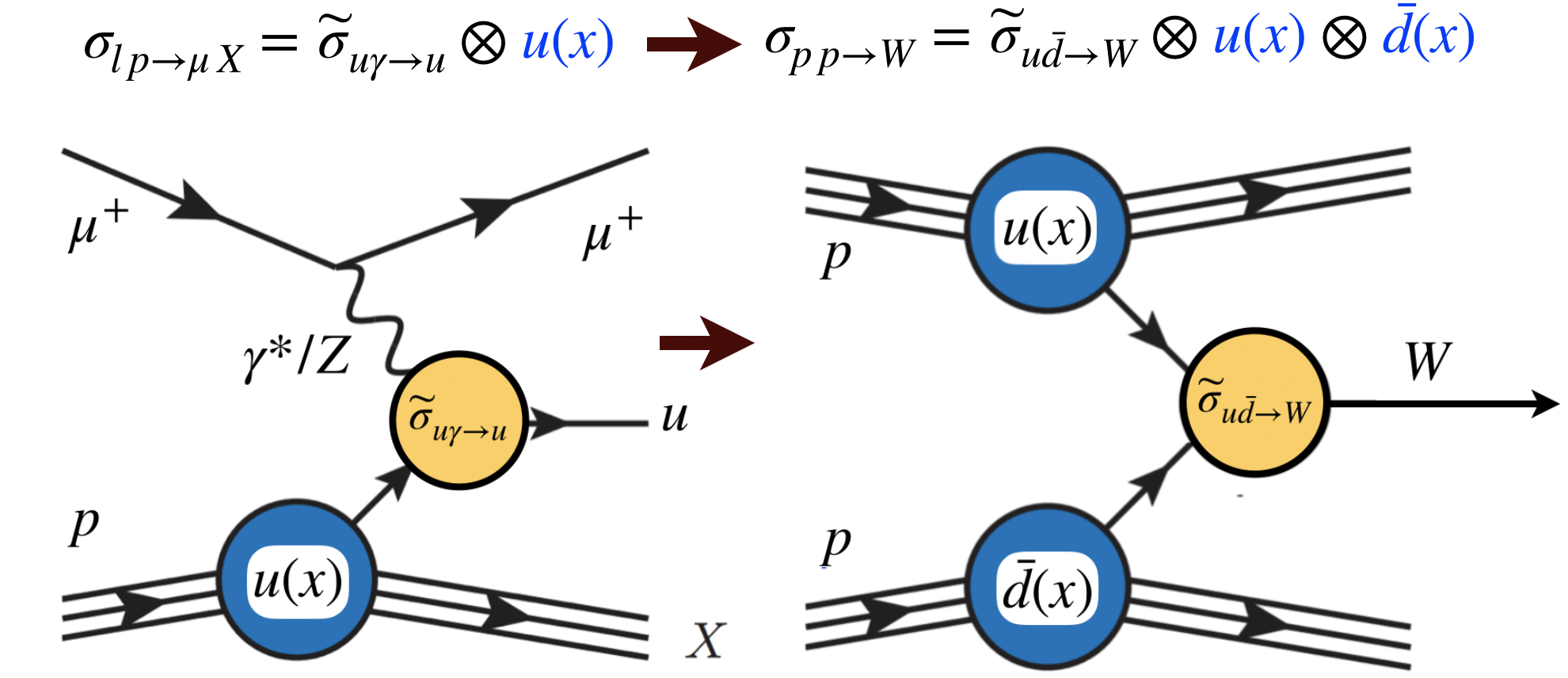Here we list possible job opportunities within my group, as well as available bachelor and master projects. Prospective candidates are encouraged to contact me at j.rojo@vu.nl.
Master projects UvA/VU Physics & Astronomy 2022-2023
More information on available MSc projects in my group here.
Effective Field Theories of Particle Physics from low to high energies
Known elementary matter particles exhibit a surprising three-fold structure. The particles belonging to each of these three “generations” seem to display a remarkable pattern of identical properties, yet have vastly different masses. This puzzling pattern is unexplained. Equally unexplained is the bewildering imbalance between matter and anti-matter observed in the universe, despite minimal differences in the properties of particles and anti-particles. These two mystifying phenomena may originate from a deeper, still unknown, fundamental structure characterised by novel types of particles and interactions, whose unveiling would revolutionise our understanding of nature. The ultimate goal of particle physics is uncovering a fundamental theory which allows the coherent interpretation of phenomena taking place at all energy and distance scales. In this project, the students will exploit the Standard Model Effective Field Theory (SMEFT) formalism, which allows the theoretical interpretation of particle physics data in terms of new fundamental quantum interactions which relate seemingly disconnected processes with minimal assumptions on the nature of an eventual UV-complete theory that replaces the Standard Model. Specifically, the goal is to connect measurements from ATLAS, CMS, and LHCb experiments at the CERN’s LHC among them and to jointly interpret this information with that provided by other experiments including very low-energy probes such as the anomalous magnetic moment of the muon or electric dipole moments of the electron and neutron.
This project will be based on theoretical calculations in particle physics, numerical simulations in Python, analysis of existing data from the LHC and other experiments, as well as formal developments in understanding the operator structure of effective field theories. Depending on the student profile, sub-projects with a strong computational and/or machine learning component are also possible, for instance to construct new operators with optimal sensitivity to New Physics effects as encoded by the SMEFT higher-dimensional operators. Topics that can be considered in this project include the interpretation of novel physical observables at the LHC and their integration into the global SMEFiT analysis, matching of EFTs to UV-complete theories and their phenomenological analyses, projections for the impact in the SMEFT parameter space of data for future colliders, the synergies between EFT studies and proton structure fits, and the matching to the Weak Effective Field Theory to include data on flavour observables such as B-meson decays.
References: https://arxiv.org/abs/2105.00006 , https://arxiv.org/abs/2302.06660, https://arxiv.org/abs/2211.02058 , https://arxiv.org/abs/1901.05965 , https://arxiv.org/abs/1906.05296 , https://arxiv.org/abs/1908.05588, https://arxiv.org/abs/1905.05215
High-energy neutrino-nucleon interactions at the Forward Physics Facility
High-energy collisions at the High-Luminosity Large Hadron Collider (HL-LHC) produce a large number of particles along the beam collision axis, outside of the acceptance of existing experiments. The proposed Forward Physics Facility (FPF) to be located several hundred meters from the ATLAS interaction point and shielded by concrete and rock, will host a suite of experiments to probe Standard Model (SM) processes and search for physics beyond the Standard Model (BSM). High statistics neutrino detection will provide valuable data for fundamental topics in perturbative and non-perturbative QCD and in weak interactions. Experiments at the FPF will enable synergies between forward particle production at the LHC and astroparticle physics to be exploited. The FPF has the promising potential to probe our understanding of the strong interactions as well as of proton and nuclear structure, providing access to both the very low-x and the very high-x regions of the colliding protons. The former regime is sensitive to novel QCD production mechanisms, such as BFKL effects and non-linear dynamics, as well as the gluon parton distribution function (PDF) down to x=1e-7, well beyond the coverage of other experiments and providing key inputs for astroparticle physics. In addition, the FPF acts as a neutrino-induced deep-inelastic scattering (DIS) experiment with TeV-scale neutrino beams. The resulting measurements of neutrino DIS structure functions represent a valuable handle on the partonic structure of nucleons and nuclei, particularly their quark flavour separation, that is fully complementary to the charged-lepton DIS measurements expected at the upcoming Electron-Ion Collider (EIC).
In this project, the student will carry out updated predictions for the neutrino fluxes expected at the FPF, assess the precision with which neutrino cross-sections will be measured, and quantify their impact on proton and nuclear structure by means of machine learning tools within the NNPDF framework and state-of-the-art calculations in perturbative Quantum Chromodynamics. This project contributes to ongoing work within the FPF Initiative towards a Conceptual Design Report (CDR) to be presented within two years. Topics that can be considered as part of this project include the assessment of to which extent nuclear modifications of the free-proton PDFs can be constrained by FPF measurements, the determination of the small-x gluon PDF from suitably defined observables at the FPF and the implications for ultra-high-energy particle astrophysics, the study of the intrinsic charm content in the proton and its consequences for the FPF physics program, and the validation of models for neutrino-nucleon cross-sections in the region beyond the validity of perturbative QCD.
References: https://arxiv.org/abs/2203.05090, https://arxiv.org/abs/2109.10905 ,https://arxiv.org/abs/2208.08372 , https://arxiv.org/abs/2201.12363 , https://arxiv.org/abs/2109.02653, https://github.com/NNPDF/
Probing the origin of the proton spin with machine learning
At energy-frontier facilities such as the Large Hadron Collider (LHC), scientists study the laws of nature in their quest for novel phenomena both within and beyond the Standard Model of particle physics. An in-depth understanding of the quark and gluon substructure of protons and heavy nuclei is crucial to address pressing questions from the nature of the Higgs boson to the origin of cosmic neutrinos. The key to address some of these questions is by carrying out an universal analysis of nucleon structure from the simultaneous determination of the momentum and spin distributions of quarks and gluons and their fragmentation into hadrons. This effort requires combining an extensive experimental dataset and cutting-edge theory calculations within a machine learning framework where neural networks parametrise the underlying physical laws while minimising ad-hoc model assumptions. The upcoming Electron Ion Collider (EIC), to start taking data in 2029, will be the world’s first ever polarised lepton-hadron collider and will offer a plethora of opportunities to address key open questions in our understanding of the strong nuclear force, such as the origin of the mass and the intrinsic angular momentum (spin) of hadrons and whether there exists a state of matter which is entirely dominated by gluons. To fully exploit this scientific potential, novel analysis methodologies need to be develop that make it possible to carry out large-scale, coherent interpretations of measurements from the EIC and other high-energy colliders.
In this project, the student will carry out a new global analysis of the spin structure of the proton by means of the machine learning tools provided by the NNPDF open-source fitting framework and state-of-the-art calculations in perturbative Quantum Chromodynamics, and integrate it within the corresponding global NNPDF analyses of unpolarised proton and nuclear structure in the framework of a combined integrated global analysis of non-perturbative QCD. Specifically, the project aims to realise a NNLO global fit of polarised quark and gluon PDFs that combines all available data and state-of-the-art perturbative QCD calculations, and study the phenomenological implications for other experiments, including the EIC, for the spin content of the proton, for comparisons with lattice QCD calculations, and for nonpperturbative models of hadron structure.
References: https://arxiv.org/abs/2201.12363, https://arxiv.org/abs/2109.02653 , https://arxiv.org/abs/2103.05419, https://arxiv.org/abs/1404.4293 , https://inspirehep.net/literature/1302398, https://github.com/NNPDF

